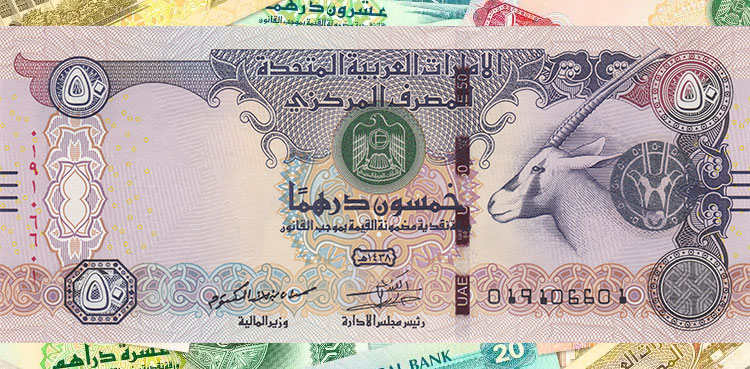Dubai, July 18, 2025 – The UAE Dirham (AED) is trading at 77.57 Pakistani Rupee (PKR) today at 8:46 PM PST, reflecting a slight decrease of 0.02 PKR from yesterday’s rate of 77.59 PKR, as reported by trusted financial sources tracking interbank and open market rates.
UAE Dirham- AED RATE- Latest Updates
This minor dip follows a robust performance in June, when the AED gained 0.81 PKR, rising from 76.44 PKR at the month’s start to 77.25 PKR by its close, with a peak of 77.6111 PKR on July 1, 2025. The Dirham’s enduring resilience underscores the United Arab Emirates’ expertly crafted economic policies and its authoritative position as a global financial powerhouse.
Currency Profiles: AED and PKR
The UAE Dirham (AED), established as the official currency of the United Arab Emirates in 1973, is pegged to the US Dollar at a fixed rate of 3.6725 AED to 1 USD, as maintained by the Central Bank of the UAE. This fixed peg ensures the AED’s dependability, making it a trusted medium for international trade and investment across the UAE’s seven emirates. The Pakistani Rupee (PKR), Pakistan’s official currency since 1948, operates as a floating currency under the State Bank of Pakistan’s supervision, vulnerable to fluctuations driven by domestic economic conditions, global market dynamics, and geopolitical developments.
Economic Impact on Pakistan
Today’s slight decline in the AED-PKR exchange rate offers marginal relief for Pakistani businesses importing from the UAE, slightly reducing costs compared to yesterday. However, the Dirham’s overall strength, driven by June’s significant gains, continues to shape Pakistan’s economic landscape. For the millions of Pakistani expatriates in the UAE, the robust AED enhances remittance values, which reached $717.2 million in June 2025, according to State Bank of Pakistan data, reinforcing the UAE’s position as Pakistan’s second-largest remittance source after Saudi Arabia. These inflows are vital, boosting household finances and fueling economic activity in local markets across Pakistan. Conversely, the elevated exchange rate increases the cost of importing goods from the UAE, from luxury products to essential commodities, posing challenges for Pakistani businesses and consumers. The AED’s tie to the US Dollar may further strain Pakistan’s trade balance and elevate debt servicing costs for loans in USD or AED. Economic analysts recommend that Pakistan prioritize export enhancement and monetary policies to stabilize the PKR, mitigating these economic pressures.
UAE’s Economic Mastery Sustains Dirham’s Value
The UAE’s economic vigor is propelled by its strategic shift from oil reliance to a diversified economy, with substantial investments in technology, sustainable energy, and vibrant trade and tourism sectors in hubs like Dubai and Abu Dhabi. Supported by authoritative fiscal governance and state-of-the-art infrastructure, the UAE ranks among the world’s top economies, attracting significant foreign capital, as evidenced by World Bank reports. The Central Bank of the UAE’s diligent oversight ensures the Dirham’s reliability, reinforcing its credibility as a trusted currency for global transactions. This expertise sustains the AED’s value, even amidst minor fluctuations, as seen in today’s rate.
